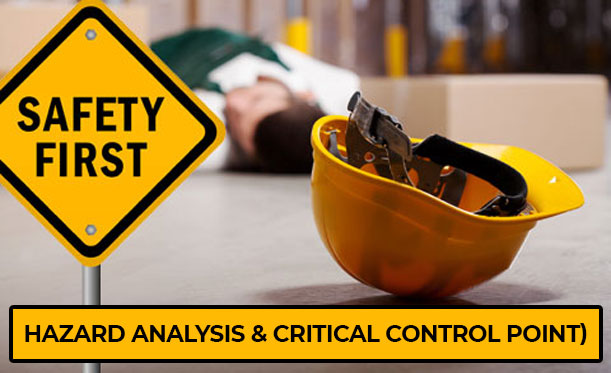Hazard Analysis and Critical Control Points (HACCP) is a systematic preventive approach to food safety. It provides a systematic method for analyzing food processes, determining the possible hazards and designating the critical control points necessary to prevent unsafe food from reaching the consumer.

HACCP is referred as the prevention of hazards rather than finished product inspection. The HACCP system can be used at all stages of a food chain, from food production and preparation processes including packaging, distribution, etc. HACCP can be applied throughout the food chain from the primary producer to final consumer.
HACCP was conceived in the 1960s when the US National Aeronautics and Space Administration(NASA) asked Pillsbury to design and manufacture the first foods for space flights. Since then, HACCP has been recognized internationally as a logical tool for adapting traditional inspection methods to a modern, science-based, food safety system. Based on risk-assessment, HACCP plans allow both industry and government to allocate their resources efficiently in establishing and auditing safe food production practices. HACCP is focused only on the health safety issues of a product and not the quality of the product.In addition to meeting the legal and moral obligation to produce food that is safe to eat, HACCP offers a variety of other benefits for not only the consumer, but for the food industry and the government.
HACCP is built around seven principles
- Analysis of food hazards: biological, chemical or physical
- Identification of critical control points: raw materials, storage, processing, distribution and consumption
- Establishment of critical control limits and preventive measures: for example, minimum cooking temperature and time.
- Monitoring of these critical control points
- Establishment of corrective actions
- Keeping records
- Systematic and regular auditing of the system in place by independent third party certification bodies.
BENEFITS OF HACCP
The implementation of this standard benefits the organization with
- Reduces the need for finished product testing by identifying the hazards associated with the inputs into the process and the product and devising control measures which can be monitored in order to minimize or eliminate the hazards.
- Reduce the chance of microbiological, chemical, and physical contaminants from reaching the customer.
- Reduce regulatory involvement (and hence costs) by replacing on-line inspection with regular auditing.
- Productivity and profitability is improved.
- Improves communications between supplier and customer. It encourages businesses to work together more closely and to help them understand each others capacity and requirements.
- Communication between the different segments of the food chain improves as HACCP provides a common language
- Improved customer confidence leads to increased market share.
